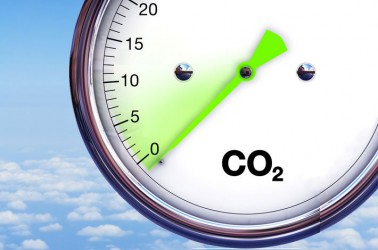Does a successful ERF auction bid really help an Australian company to remain competitive?

By Dr Anthony Horton
Now that the results of the second Emissions Reduction Fund (ERF) auction have been released, I think it is reasonable (and important) to reflect on how being successful in an auction could assist an Australian company to remain competitive (and enhance their competitiveness) on the world stage.
In analysing the auction results, Climate Institute CEO John Connor pointed to the need for a policy focus that will show the world that Australia has a clean and modern economy. He also put the results into context in terms of the first two auctions contributing 3.5% of Australia’s total emissions to 2030, representing 8% of a 2030 abatement target commensurate with Australia making its rightful contribution to the 2°C warming cap and representing 15% of the Government’s current 2030 target.
The Media Release from the Climate Institute yesterday afternoon gave a very good analysis of auction outcomes and prompted me to think about “what next” from the point of view of an Australian company. This is prudent given the way that many international Governments and large very well known brands are moving on the opportunities that climate change is already presenting and will continue to present going forward.
Those of you that have read my previous blog posts will know that I analyse and comment on the international policy landscape with respect to climate change and the response of the business community. As a result of following both of these closely, five points come to mind that the Australian Government and companies will need to grapple with (and rather quickly find workable solutions for) in order to both reduce their emissions and maintain (and over time increase) their international competitiveness.
1) Governments will need to implement innovative policies that empower companies to identify and pursue low carbon opportunities. By its very name, the ERF offers Australian companies opportunities to implement lower emission projects. This assumes they were successful in the bidding process and can comply with all of the contractual compliance conditions including delivery timelines of course.
These conditions (and others that successful bidders are required to agree to) are quite onerous, and given that taxpayers’ money has been put up for the fund, many Australians would say that such conditions are perfectly justified. If an Australian company wasn’t successful or did not bid, it is difficult to see where the incentive to identify and pursue such opportunities are in a domestic context given that keeping the doors open is challenging enough in Australia at present.
2) There is a clear signal that future policies need to mandate or incentivise the procurement of a large percentage of a companies’ energy needs from renewable sources. In previous blogs I have highlighted examples of Governments increasing their investment in renewable energy and multinational corporations factoring this into their procurement decisions-for either goods or services (or even for both). As a result of doing this, not only have cost savings been realised, their corporate social responsibility profile has (in some cases) been significantly transformed.
The corporations that are making such procurement decisions have realised the importance of continuous improvement in terms of their own business performance, and therefore it is justifiable that they ask this of suppliers. At present I don’t see how the ERF or the Direct Action Policy assists Australian companies with this. I am aware of Australian Renewable Energy Agency (ARENA) funding for renewable projects, however again that is a competitive process and if you aren’t successful where is the incentive then?
3) It is clear that science based emission reduction targets are gaining significant traction in both Government and business spheres. The We Mean Business Coalition has published detailed guidance information on how to do this-whether by the 3% solution, by cutting absolute emissions, using value added approaches or lastly the Sectoral Decarbonisation Approach (SDA). Again targets like this clearly demonstrate that corporations understand the challenges and opportunities that climate change presents. Being market based, those that adopt these could see their competitive advantage grow over time.
The ERF is predominantly designed for individual projects rather than a series of projects one after the other, and while companies can reduce their emissions over time for that project (above comments regarding contractual compliance notwithstanding) I find it difficult to see how it encourages Australian companies to set science based emission reduction targets.
4) Pricing carbon internally and 5) investing in renewable energies and low carbon assets are both fairly self explanatory. Given that there is no longer a carbon pricing mechanism in Australia, once again it is difficult to see where the incentives are for Australian companies to do this. Perhaps the best illustration of the worldwide hunger to invest in renewables is the divestment movement. The sheer scale of the divestment movement, and the range of sectors that are embracing divestment shows that corporations have essentially charted their future course, irrespective of future developments (including the United Nations Climate Change Conference in Paris). At the risk of sounding like a broken record, under the current Government policy settings I can’t see how Australian companies are assisted to price carbon internally or invest in renewable energies and low carbon assets (above ERF and ARENA comments not withstanding).
Overall, I think it is reasonably clear that, successful in an ERF auction or not, Australian companies have a lot to do in order to remain internationally competitive in a world that is clearly intent on reducing carbon emissions. Given that trillions of dollars will be required post Paris to maintain the current pledges, the Australian Government will have to play its part in that investment and examine how their policy settings may need to change to support Australia’s share and ensure that Australian companies remain competitive.
 About the author: Anthony Horton holds a PhD in Environmental Science, a Bachelor of Environmental Science with Honours and a Diploma of Carbon Management. He has a track record of delivering customised solutions in Academia, Government, the Mining Industry and Consulting based on the latest wisdom and his scientific background and experience in Climate/Atmospheric Science and Air Quality. Anthony’s work has been published in internationally recognised scientific journals and presented at international and national conferences, and he is currently on the Editorial Board of the Journal Nature Environment and Pollution Technology. Anthony also blogs on his own site, The Climate Change Guy.
About the author: Anthony Horton holds a PhD in Environmental Science, a Bachelor of Environmental Science with Honours and a Diploma of Carbon Management. He has a track record of delivering customised solutions in Academia, Government, the Mining Industry and Consulting based on the latest wisdom and his scientific background and experience in Climate/Atmospheric Science and Air Quality. Anthony’s work has been published in internationally recognised scientific journals and presented at international and national conferences, and he is currently on the Editorial Board of the Journal Nature Environment and Pollution Technology. Anthony also blogs on his own site, The Climate Change Guy.
Like what we do at The AIMN?
You’ll like it even more knowing that your donation will help us to keep up the good fight.
Chuck in a few bucks and see just how far it goes!
Your contribution to help with the running costs of this site will be gratefully accepted.
You can donate through PayPal or credit card via the button below, or donate via bank transfer: BSB: 062500; A/c no: 10495969










3 comments
Login here Register here-
Chris the Greatly Dismayed -
Chris the Greatly Dismayed -
vivienne29
Return to home pageI think you are being too kind, Anthony. ‘Direct action’ is and can only be an expensive disaster. It has transferred all the costs to taxpayers and relies on too much unproven science (especially around carbon farming or soil carbon). The Clean Energy Regulator Carbon abatement contract register shows much (or most ?) of the contracts going to agribusiness and land use projects and others that were existing business practices (such as Adelaide Brighton Cement’s waste incineration – that included burning tonnes of treated permapine.)
Here are the results of the auction (and I wish there was more detail) http://www.cleanenergyregulator.gov.au/ERF/project-and-contracts-registers/carbon-abatement-contract-register
Carbon farming and soil carbon storage across Australian soils is an inexact science.
“In other words: the CSIRO’s soil carbon trials actually showed a decrease in the amount of carbon stored in the soil! Not only this, but the report says it is “extremely difficult” to predict whether soil carbon farming practices will work in the future.”
from here http://www.abc.net.au/news/2011-07-21/eltham-a-close-look-at-abbott-direct-action-plan/2804206
and at the same time land clearing has once again increased (mostly due to the Newman government and fires of various sources) but much more land is being approved for clearing and agricultural development across Northern Australia.
We are still, as a nation, ‘not trying’.
Who the hell is “Terra Carbon Pty Limited” anyway ? Some sort of dodgey brokers or agents…. http://www.abc.net.au/news/2015-04-27/carbon-farming-auction-good-start-to-reducing-emissions/6418792
The tenders are all for bullshit projects. Pretty useless. I promise not to cut down the trees I wasn’t going to cut down anyway until I found I could get paid for doing nothing.